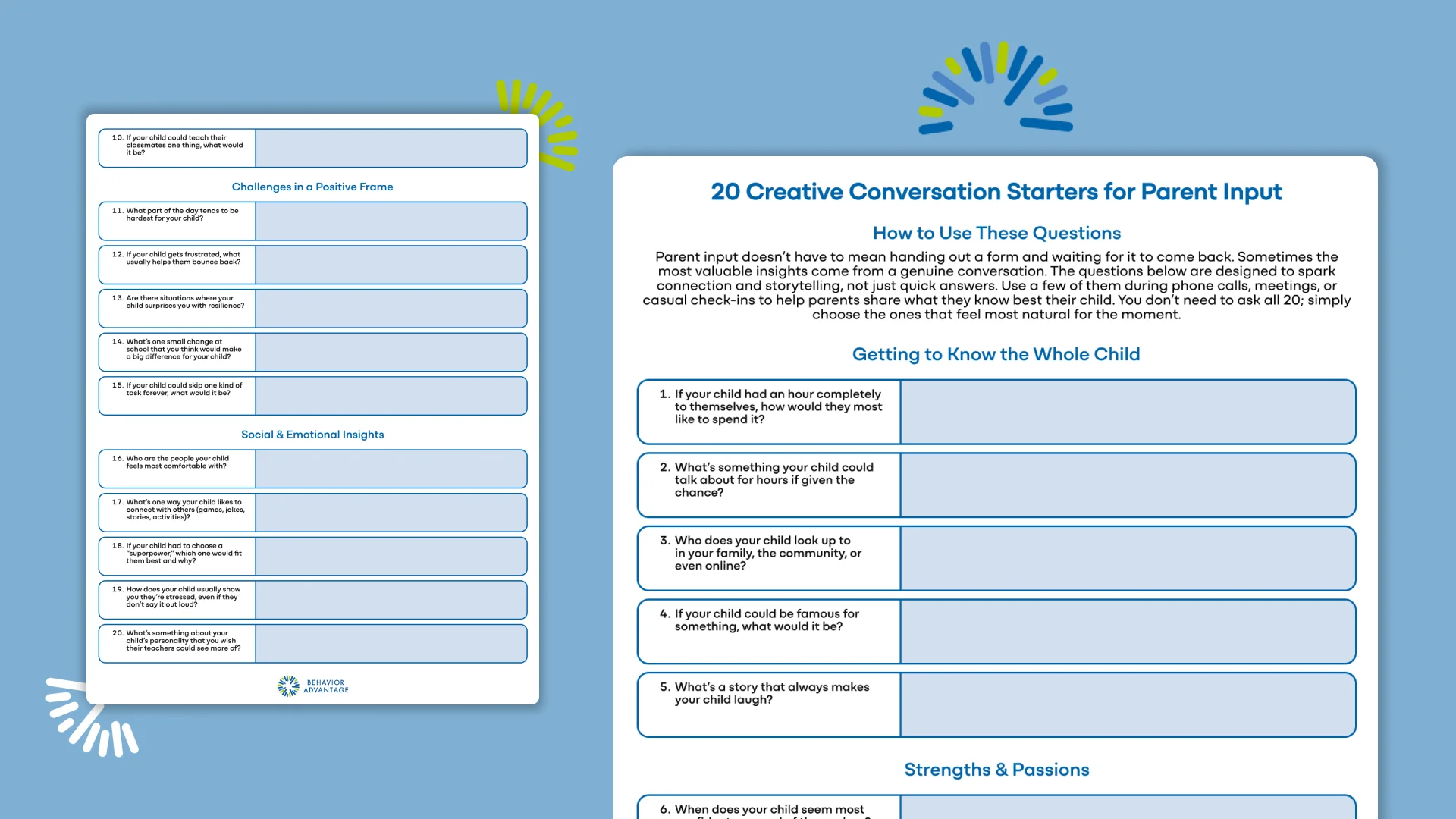Gathering parent input is not just a procedural requirement of the IEP process; it’s one of the most meaningful ways we can support students and build stronger relationships with families. When we reframe this step as a benefit instead of another checkbox, it becomes an opportunity to make both the IEP and the behavior plan more effective and personal.
Download our free 20 Creative Conversation Starters for Parent Input Template

Opportunity #1: Build a Positive Home–School Connection
Yes, we send home parent input forms because we’re required to, but imagine the potential when parents feel genuinely heard. For a family, being asked to share what they know about their child can feel incredibly validating and collaborative. A few intentional actions during this step can strengthen trust and help the student succeed.
Tips for maximizing parent input:
- Give plenty of time for parents to fill out the form (and offer friendly reminders).
- Reach out personally. A quick email or phone call goes a long way. Let them know how their input will be used to support their child.
- When the form comes back, read it! Highlight what you might not have known before. Ask yourself:
- Do their interests at home match what we see at school?
- Are there additional parent concerns that we can address in the IEP?
- Do their interests at home match what we see at school?
- Follow up with any questions. A short phone call or email to clarify a parent’s comment not only helps us understand the student, but it also shows that we genuinely care.
Opportunity #2: Strengthen the IEP and Behavior Plan
Once we have that parent input, let’s put it to work! Parent input often includes detailed information about what motivates the child, how they learn best, their strengths, and where they struggle most. This information is priceless when developing an IEP or a behavior support plan. Instead of just “noting” these details, we can intentionally build them into the supports we design.
If you are wondering how to write a good Behavior Intervention Plan (BIP), check out our guide.
Make behavior plans strength-based.
Effective behavior plans are strength-based. If a student loves socializing, build in opportunities to connect with others by holding leadership roles, participating in group activities, or taking on classroom jobs that involve teamwork. If they thrive in sports or physical movement, consider incorporating movement breaks or sports-related content into academic lessons or reinforcement systems.
Use interests to build motivation.
Great behavior plans teach new skills. Practicing new skills, especially social or executive-functioning skills, takes effort and repetition. Motivation matters! Tapping into a student’s interests (even outside of school) can make learning feel meaningful. Don’t be afraid to incorporate home or community activities such as fishing, gaming, dancing, or animal care into the plan. Connecting a student with their passion is a powerful tool for engagement.
Conclusion
Gaining parent input doesn’t have to feel like a task. When used intentionally, it becomes one of the most effective tools we have for building meaningful IEPs and behavior plans and for creating a true partnership with families. A little extra effort in this step can go a long way in supporting students, fostering trust, and making our plans more individualized and effective.










